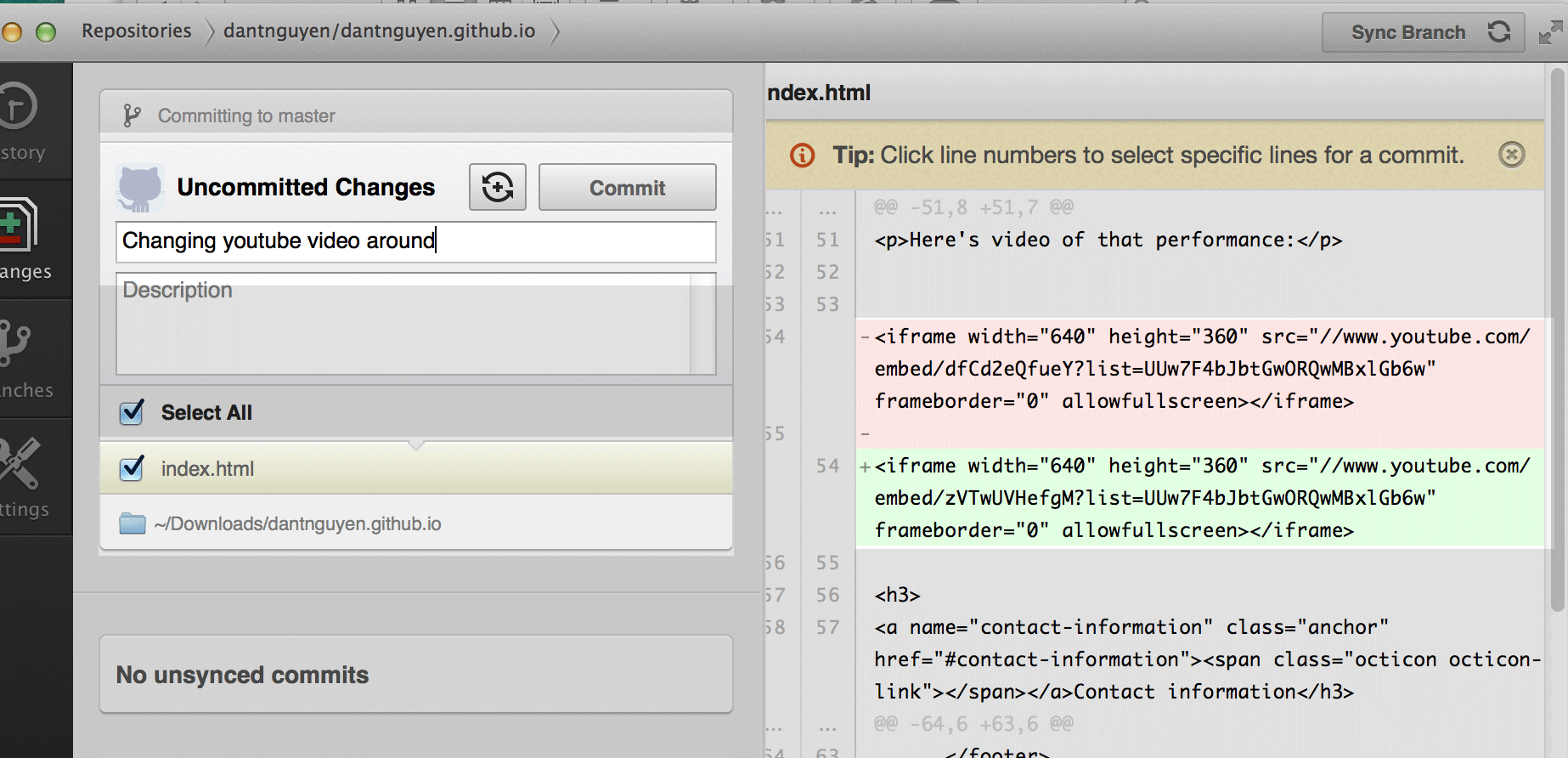The git status command is run to show the state of the working directory and the staging area. It makes it possible to view the staged changes and the files not being tracked by Git. The status output does not show any information about the committed project history. The -- verbose option not only shows the names of changed files but also displays the textual changes staged to be committed. The -v option defined twice will show not staged changes in the working tree.
Sometimes we encounter a situation where we add, modify, and delete some files locally in the project. But we want to update the git index by adding only modified & deleted files to the staging area and then commit only those files to repository. Basically, we want to ignore new files or folders i.e. un-tracked files. This article is on the 'git clean' command, which is used to delete untracked files from the local working tree. Often, when DevOps professional talk about a 'git clean', they often want to squash commits and rebase master to a branch or a branch to master.
However, if your focus is to remove untracked files with the 'git clean' command, you've come to the right place. The git status is another must-know command that returns information about the current state of the repository. For e.g. a list of files changed, list of tracked changes on staging, untracked changes on local, and information about current branch & commits. Untracked - This file exists locally, but isn't a part of the Git repository.
The file's change history will not be recorded and it will not be pushed to remote copies of your repository when you run git push. Unless they've been added to an ignore list, untracked files will show up when viewing your Git status. The git diff command displays the changes between the working directory and the staging area. It is used in combination with git status and git log commands for analyzing the state of a git repository.
The --cached option displays the changes between the staging area and the HEAD. It shows what has been added to the staging area and staged for a commit. The git status command is used to display the state of the repository and staging area. It allows us to see the tracked, untracked files and changes. This command will not show any commit records or information.
Instead of a clean, developers might want to perform a 'git stash' instead. The 'git stash' command allows developers to shelve changes temporarily and then pop or apply those changes back to the local worktree any time in the future. The ability to git stash untracked files as well really makes it difficult to justify an aggressive 'git clean' call. Let's just start with adding a single file to stating.
To use the git add command, just type git add filename. The word filename here refers to the name of the file you edited, such as CustomerData_IND.txt. Also, use git status command to see what git has now to tell us about the state of the repository. Remember that 'git clean' only removes untracked files. To find out if a file is tracked or not, developers can issue the 'git status' command from within the repository. If you want to remove untracked files from the working tree in Git, using the git clean command is the best way.
The git clean command cleans the working tree by recursively removing the files which are not under version control. When -u option is not used, untracked files and directories are shown (i.e. the same as specifying normal), to help you avoid forgetting to add newly created files. Because it takes extra work to find untracked files in the filesystem, this mode may take some time in a large working tree. For more information, see Working with remote repositories. Let's see this with an example, suppose we add new file example.html in our repository and run git status command to see the status of the file. It shows a list of untracked files which include example.html file.
By this time, you've done some work with Git on your computer. You've created files, added them to the staging area, and committed them. But these actions only concern your local repository. When working in a team, you'll also use a remote repository.
What are the basic Git commands to work with remote repositories? Recovering a deleted file using the Git command line involves the `git restore` or `git checkout`command. Whenever you modify files in Git—including creating new files, editing, or deleting existing files—the changes start as unstaged. Then you stage the changes with the `git add`command, and finally, you commit the changes using the `git commit` command. Git provides ways to recover a deleted file at any point in this life cycle of changes. And after you committed changes to your local repo, you push them to the remote repository so they can be accessed by the rest of the team.
These actions are performed by the commands git pull and git push. When you use git reset, your changes still exist in the file, but the file has been unstaged (i.e. the changes no longer being tracked by version control). So now, git status will display a message that there are changes that can be added or staged to version control. The first thing to understand is why stashing changes in Git is important. Assume for a moment that Git doesn't have a command to stash changes. Suppose you are working on a repository with two branches, A and B.
The A and B branches have diverged from each other for quite some time and have different heads. While working on some files in branch A, your team asks you to fix a bug in branch B. You quickly save your changes to A and try to check out branch B with git checkout B.
In this chapter, you'll create a new repository and then add files by using git add and git commit. You'll learn about the git diff command, which will help you keep track of what you've changed in your repository as you're working. You'll then dive into the staging area, one of the special features of Git that enables you to commit parts of your changes into the repository. This is a use case that comes up often, and Git's support for this is worth learning. Finally, you'll see how Git GUI provides these same operations.
If a developer wants to remove untracked files from a git working tree, the easiest way to do it is with the 'git clean' command. You might not want to commit every file in your working directory to the repository. For example, you're unlikely to want to add files generated during runtime to your project's repository. With Git panel, you can mark files to be ignored by adding them to a list in a .gitignore file. Git reset is essentially the opposite of the command git add. It will undo the git add to remove the changed file from version control, and then you can git checkout to undo the changes from the file.
This command updates the index by adding the changes for those files only about which git already know i.e. changes in tacked files only. Therefore, it will add only modified & deleted files from the current project to the staging area and will skip all new files / folders. You can now freely change any file, create and delete files, add files to the staging area, commit files, or even push files to a remote repository. Whatever you do under the user-profile branch won't affect the master branch. The Git Versioning view provides you with a real-time list of all of the changes made to files within a selected folder of your local working tree. It opens by default in the bottom panel of the IDE, listing added, deleted or modified files.
The git add command adds a change in the working directory to the Staging Area. It tells Git that there are few updates in the project, which the user wants to commit next. The thing here to note is that git add doesn't affect the remote repository, as changes are not actually recorded until you perform git commit. There's a third method that you can use to prevent staging or committing untracked files, and that is by adding them to your .gitignore file.
Git ignore rules are usually defined in a .gitignore file at the root of your repository. However, you can choose to define multiple .gitignore files in different directories in your repository. Each pattern in a particular .gitignore file is tested relative to the directory containing that file.
However the convention, and simplest approach, is to define a single .gitignore file in the root. As your .gitignore file is checked in, it is versioned like any other file in your repository and shared with your teammates when you push. Typically you should only include patterns in .gitignore that will benefit other users of the repository. Before we make a commit, we must tell Git what files we want to commit . Let's say you're working on two files, but only one of them is ready to commit.
You don't want to be forced to commit both files, just the one that's ready. We add files to a staging area, and then we commit what has been staged. Even the deletion of a file must be tracked in Git's history, so deleted files must also be staged and then committed. Submodules have more state and instead report M the submodule has a different HEAD than recorded in the index m the submodule has modified content ?
The submodule has untracked files since modified content or untracked files in a submodule cannot be added via git add in the superproject to prepare a commit. Git merge updates the current branch with the corresponding remote tracking branch. Using git pull, you get both parts of these updates. But, this means that if you are checked out to feature branch and you execute git pull, when you checkout to master, any new updates will not be included.
Whenever you checkout to another branch that may have new changes, it's always a good idea to execute git pull. To ignore untracked files, you have a file in your git folder called .git/info/exclude. This file is your own gitignore inside your local git folder, which means is not going to be committed or shared with anyone else. You can basically edit this file and stop tracking any file. Here's what the official Git - gitignore Documentation says about this file. This first example is on how to ignore untracked files.
A file that is not tracked in git basically means a new file from git's perspective (a file that you never git add && git commit -m "commit"). Remember that once you add a set of changes to version control using git add, the changed file has been staged. The great benefit of this method is that you aren't deleting any data. It's all stashed safely away and can be restored at any time.
Re-applying the stashed files will even restore your untracked files to the state they were without adding them to Git. This is an excellent way to save a "snapshot" of uncommitted changes. Another method of getting a clean working directory is to use git stash to stash and delete both tracked and untracked files.
You can do this using the --include-untracked command, which stashes all untracked files and then runs git clean behind the scenes for us. Git stash is a powerful Git feature for temporarily shelving and reverting local changes, allowing you to re-apply them later on. As you'd expect, by default git stash ignores ignored files and only stashes changes to files that are tracked by Git. However, you can invoke git stash with the --all option to stash changes to ignored and untracked files as well. Follow the steps below to practice undoing changes that occur after git add but before git commit.
First, make a new change to README.md, and run git add to stage the changed file (i.e. add to version control). Check the git status to see the status of your changes. When you git rm a tracked file to remove it from your repository and delete your local copy, the file will appear as deleted under "Changes to be committed". Like above, you can unstage this deletion in the usual ways. The file will reappear after unstaging the change.
You first need to type "git", followed by a command – "config" in our example – and pass an option, which is "--global" in the code above. The option "--global" means that you set your username and email for Git globally on your computer. No matter how many projects with separate local repositories you create, Git will use the same username and email to mark your commits. By default, the Versioning view displays a list of all modified files within the selected package or folder in your Working Tree. You can also click the column headings above the listed files to sort the files by name, status or location.
Git is a free and open source, distributed version control system designed to handle everything from small to very large projects with speed and efficiency. Every Git clone is a full-fledged repository with complete history and full revision tracking capabilities, not dependent on network access or a central server. Git is used for version control of files, much like tools such as Mercurial, Subversion, CVS, and Perforce. To remove the desired file, type git rm --cached CustomerData_IND.txt Also, use the git status command to check the state of the repository.
This will now list which files are staged, unstaged, and untracked. The downside to this method is that it will stash everything, including any changes made to tracked files. You can get around that by adding changes to your tracked files to staging and then tacking on the flag --keep-index. This flag will prevent anything in staging from being stashed, so only changes to unstaged and untracked files will be cleared. Files added to the repository's index are listed under Staged Changes.
Previously untracked files are labelled "A" to indicate that they've been staged. On its own, git fetch updates all the remote tracking branches in local repository. No changes are actually reflected on any of the local working branches.
There are only four commands that prompt network interactions in Git. A local repository has no awareness of changes made on the remote repository until there is a request for information. And, a remote repository has no awareness of local changes until commits are pushed. Then, run git add to stage the file (i.e. add to version control) and then run git commit to commit the file. When you git add an untracked file so that Git will start tracking it, the file will appear as new file under "Changes to be committed" in your Git status. You can unstage the addition of this file just like you would unstage any other change.
























































